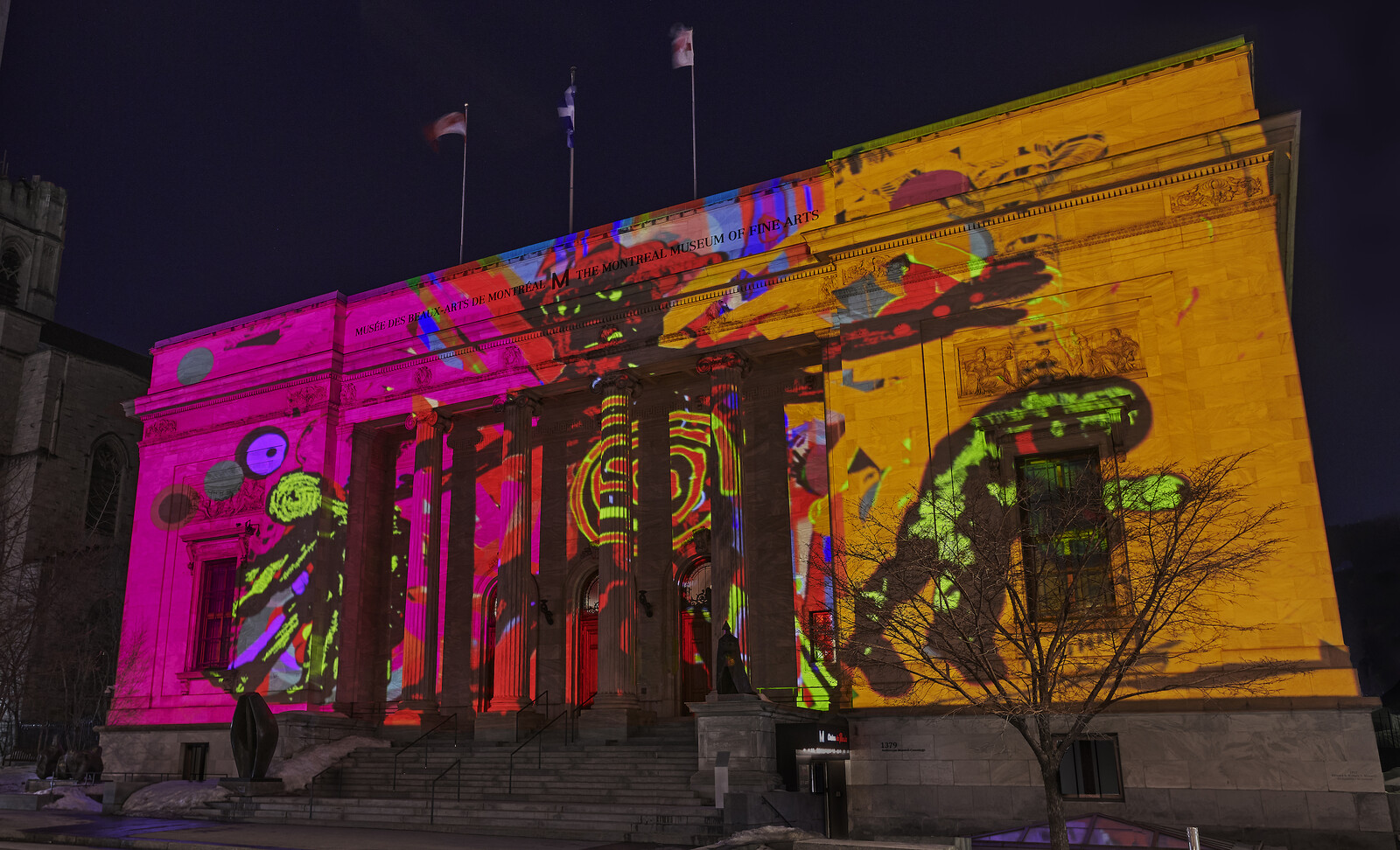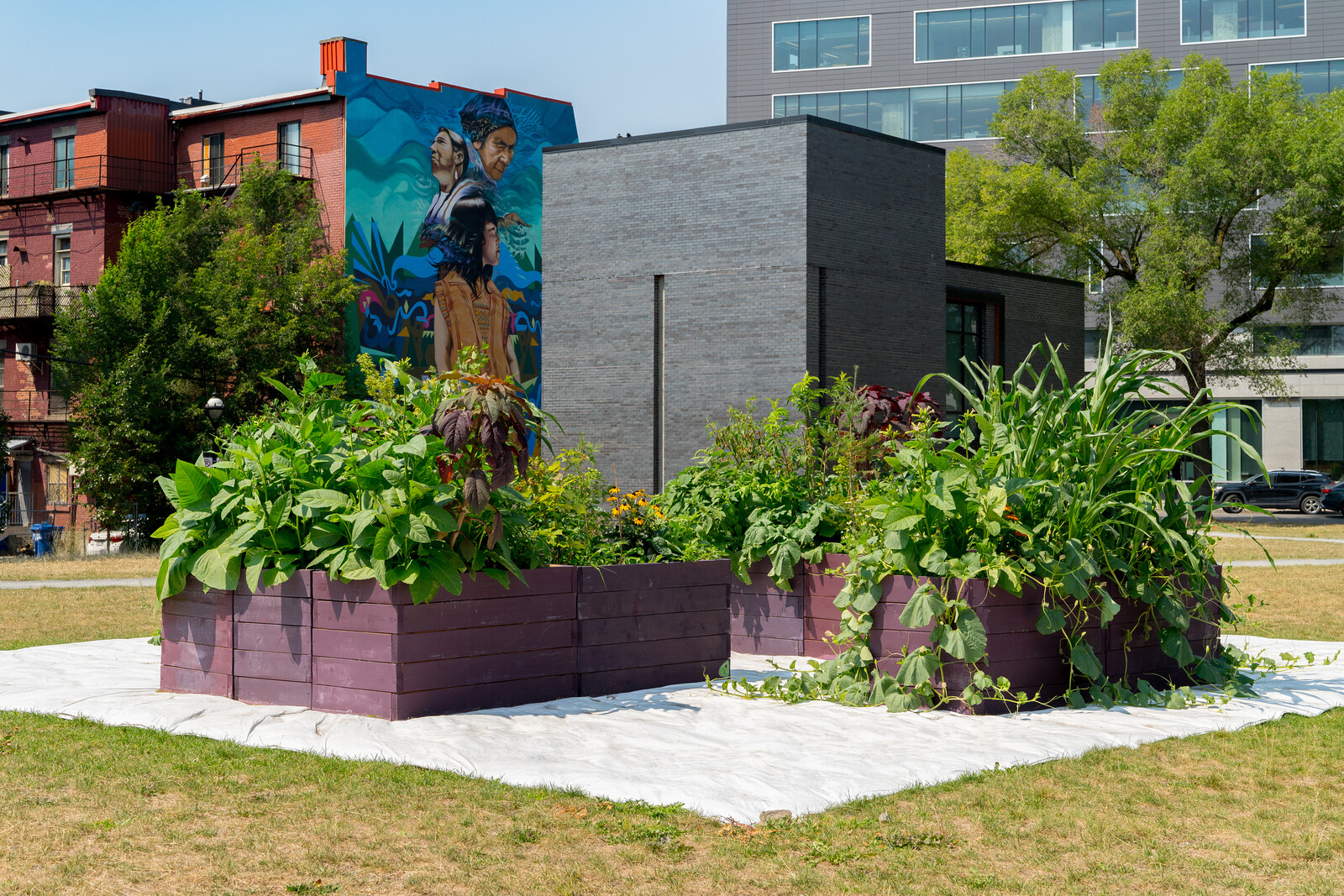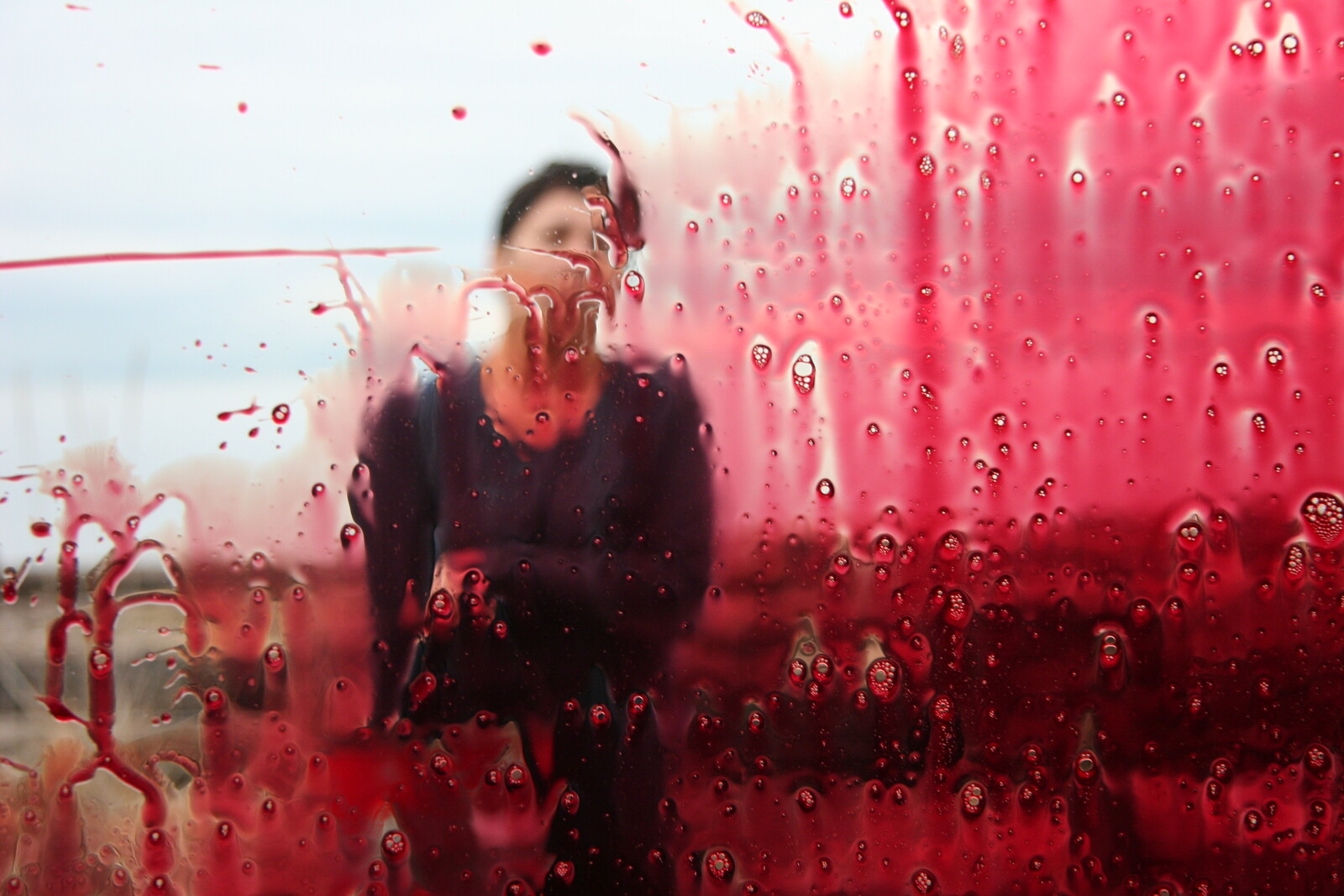Categories
Subjects
Authors
Artists
Venues
Locations
Calendar
Filter
Done
May 16, 2023 – Review
Nalini Malani’s “Crossing Boundaries”
Jayne Wilkinson

After more than fifty years as a pioneering video and installation artist, Nalini Malani maintains a rigor, criticality, and joy that transcends her work’s challenging subject matter. Given that this is the Karachi-born Indian artist’s first solo exhibition in Canada, it’s a curiously small sampling of projects, but nonetheless encompasses the conceptual approaches for which she is best known: strong feminist and activist perspectives on issues related to gender, race, bodily autonomy, and democratic rights; highly charged source material drawn from current or historic events; diverse literary references combined with shadowy, impressionistic figuration to produce immersive video environments; and an ongoing concern with erasure as both aesthetic device and political gesture.
Can You Hear Me? (2018–20) is the centerpiece here, a nine-channel installation comprised of eighty-eight individual iPad animations projected across three walls. Each short segment repeats its own brief narrative in frenzied, arhythmic patterns, and is accompanied by a musical score that ranges from soaring and dramatic to cacophonous to (sometimes) barely audible. It’s a tumultuous and relentlessly dynamic experience, with no single focal point. Much like a painted or sculpted frieze, there is no distinguishing one vignette from the next, no firm contours to scenes that bleed across …
February 3, 2022 – Review
Forensic Architecture with Laura Poitras’s “Terror Contagion”
Jared Quinton

Since the onset of the Covid-19 pandemic, international research collaborative Forensic Architecture has been investigating the use of Pegasus, a spyware product developed by the private Israeli cyber-arms firm NSO Group. Pegasus has been licensed by governments around the world to covertly surveil journalists, activists, and political opponents by hacking their phones, and has been linked to high-profile human rights cases such as the 2014 disappearance of 43 students from Ayotzinapa, Mexico, and the brutal murder of Saudi journalist Jamal Khashoggi in Istanbul in 2018. In “Terror Contagion,” presented at the Musée d’art contemporain de Montréal (MAC), Forensic Architecture and a few high-profile collaborators—filmmaker Laura Poitras, musician Brian Eno, and whistleblower Edward Snowden—map a preliminary network of Pegasus’ operations, attempting to visualize the frightening scale of its global reach as well as to humanize the experience of its civilian victims.
Mirroring the collaborative nature of Forensic Architecture’s work and the networks that Pegasus is designed to infiltrate, the exhibition fills a subterranean, windowless gallery with a dense web of interconnected films and videos that feature interviews with people targeted by the spyware alongside haunting, disturbingly beautiful data visualizations of these attacks and how they are interconnected. Explanations of how the …
October 22, 2021 – Review
17th MOMENTA Biennale, “Sensing Nature”
Xenia Benivolski

The seventeenth edition of MOMENTA seeks to map out alternate ways of sensing the natural world and, in return, to allow nature to respond in ways imagined, projected, and real. Curated by Stefanie Hessler with Camille Georgeson-Usher, Maude Johnson, and Himali Singh Soin, the biennale comprises fifteen exhibitions scattered throughout the city’s institutions and galleries, which offer divergent perspectives from the points of view of air, water, land, animal, and plant life. These projects tether the exhibition to the site of Tiohtià:ke/Mooniyang/Montréal, and expand the local context by letting global contemporary issues resonate throughout.
On opening day, a group gathered to see TEIONHENKWEN Supporters of Life, a new installation in a city park by Montréal’s Grande Bibliothèque, where artist and ethnobotanist T’uy’t’tanat-Cease Wyss, in collaboration with Silverbear and Joce TwoCrows Mashkikii Bimosewin Tremblay, planted an elaborate garden of indigenous plants, carefully researched for their medicinal and ceremonial properties. The garden is a new start: walking between the wooden crates, viewers take part in a social gathering between groups of plants and of humans. This encounter proposes a novel way of moving through the biennial, through touch, smell, and the presence of the entities that prompt one to ponder the priorities and …
November 8, 2019 – Feature
Montréal Roundup
Stefanie Hessler

A camera pans over a beach littered with driftwood. As the lens approaches a stack of branches arranged as if for a bonfire, a rocket-like screeching sound pierces the scene. An instant later, the wood goes up in flames. The image fades to a view of the artist Rebecca Belmore submerged in the nearby water. Fully dressed, she flails in the shallows with a metal bucket in her hand, gasping for air. Her body is thrown around by something other than the forces of the waves—an interior torment. Belmore exits onto the beach, carries the bucket toward the camera, and with an arduous groan throws its liquid contents against the lens. What we, the viewers, may expect to be clear water is blood-red, dripping down the lens as the artist stands and looks directly at us until the video ends. In Belmore’s installation Fountain (2005), the sequence was projected onto a wall of falling water inside the Musée d’art contemporain de Montréal (MACM).
In its ambiguity between birth or death, creation or apocalypse, Belmore’s Fountain—her contribution to the Canadian Pavilion at the 51st Venice Biennale in 2005—is as potent a metaphor today as it was almost 15 years ago. The …